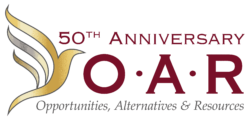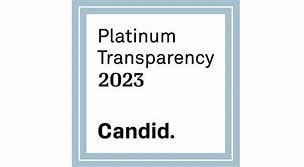OAR History
1968
In 1968
a riot and strike occurred at the prison in Richmond, Virginia prompting a gathering of several concerned citizens. The goal of the gathering was to try to find ways to keep people out of prison and find ways to prepare people for success after incarceration. Several local churches convened a conference on Churches and the Correctional System. Following that effort, Jay Worrall, Jr. founded the OAR movement, which at the time stood for Offender Aid and Restoration. It was his vision of citizen visitors helping the incarcerated that formed the original premise for the creation of OAR organizations around the country.
1970
In 1970
Offender Aid and Restoration of Virginia received its articles of incorporation to legally document the creation of the organization.
1971
In 1971
the OAR office serving Fairfax, Loudoun, and Prince William County was incorporated as a private, non-profit, community-based organization and opened its doors with an all-volunteer staff.
1973
In 1973
Jay Worrall, the original OAR founder, opened the national office. At the height of the OAR movement there were 22 local agencies in 10 states. Today there remain eight local OAR affiliates, four of which are in Virginia, who have emerged as viable non-profit organizations with expanded missions and service delivery areas.
1980’s
In the 1980’s
OAR began providing Alternative Sentencing programs that allowed a select group of justice-involved community members to avoid convictions and/or incarceration by performing community services and attending educational classes.
1980’s
In the late 1980’s
OAR begins to secure funding for fully paid staff, while keeping volunteers as the heart of the organizations work and mission
1998
In 1998
OAR changed to its name from Offender Aid and Restoration to Opportunities, Alternatives, and Resources. The new acronym better described the nature of our work while moving away from stigmatizing language.
1990’s
In the late 1990’s
OAR began to form research partnerships with George Mason University to perform program evaluations and to implement effective program assessments.
2000’s
In 2000’s
OAR collaborated with the state-wide Coalition for the Treatment of Abusive Behaviors (CTAB) and the newly established Batter Intervention Program Board to establish state-wide standards for Batterer Intervention Programs (BIP) to address domestic violence. In 2001, OAR applied and became a certified BIP provider in the Commonwealth of Virginia and has maintained that certification ever since.
2003
In 2003
OAR received funding to launch the Virginia Serious and Violent Offender Reentry Program (VASAVOR) to provide comprehensive and collaborative serves to individuals being released from prison after serving lengthy sentences for serious and violent felony offenses.
2010’s,
In the 2010’s
OAR began implementing Evidence-Based Practices to ensure effective program delivery. OAR also began to track and measure program outcomes that measure a meaningful impact resulting from OAR services rather than just program outputs such as the number of clients served or the number of services provided.
2018
In 2018
OAR significantly expanded the services offered in Loudoun and Prince William County. A satellite OAR office was opened in Leesburg, Virginia and a new contract with the Prince William County Jail for comprehensive pre-release services was secured.

